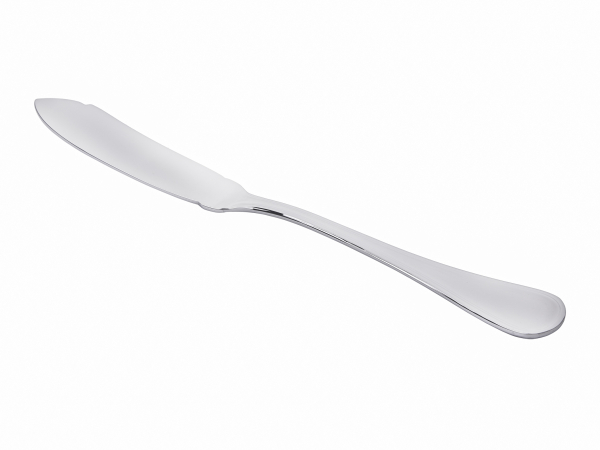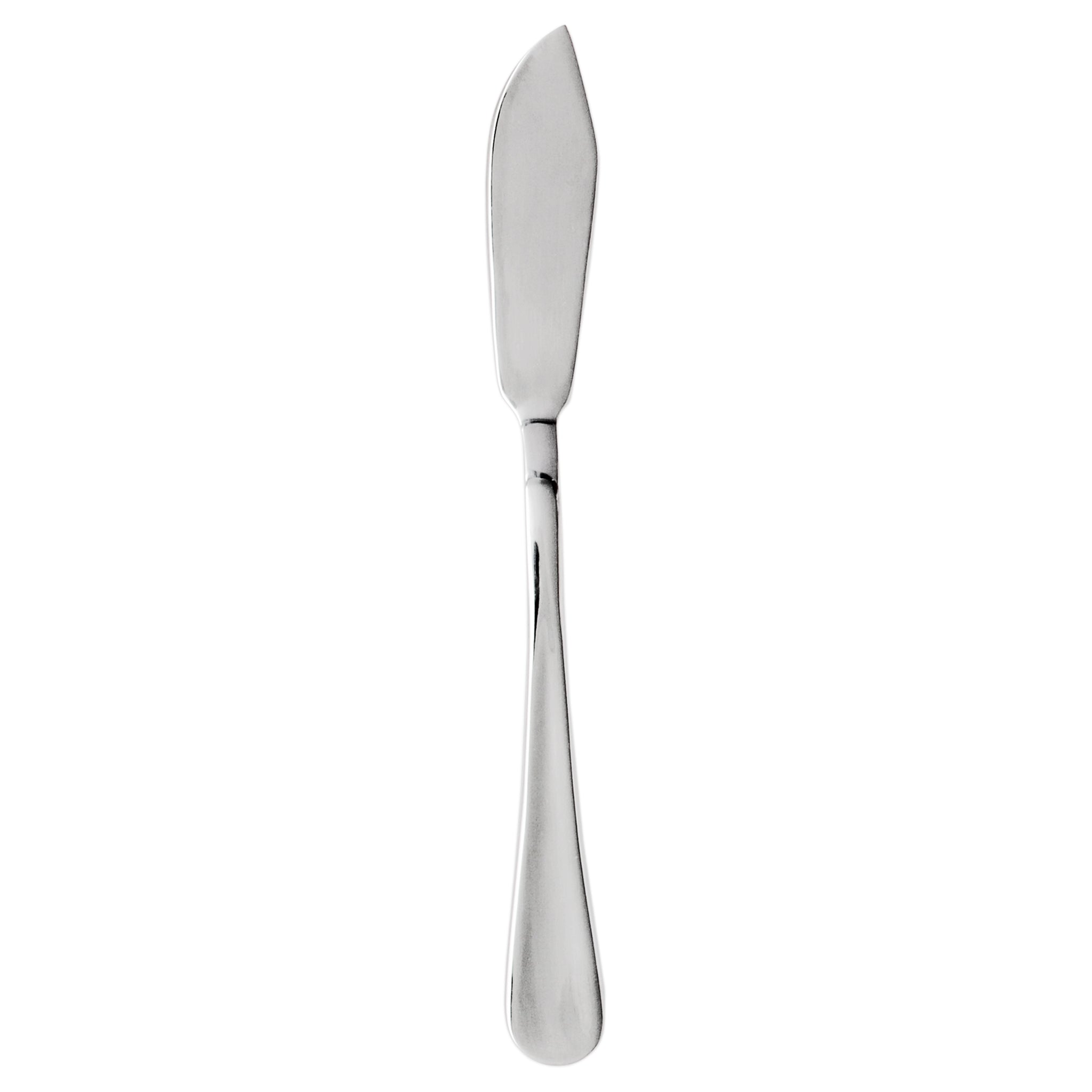How to maintain a fish knife for optimal performance
Wiki Article
The Ultimate Overview to Preserving Your Fish Knife for Long Life and Performance
Maintaining a fish knife is necessary for ensuring its durability and ideal efficiency. Appropriate treatment involves a collection of actions, consisting of cleansing, honing, and storage space. Each stage adds to the knife's effectiveness during usage. Comprehending these methods can make a considerable distinction in the lifespan of this essential device. Several users neglect essential facets of maintenance that can lead to deterioration. What are these often-forgotten steps?Selecting the Right Fish Knife for Your Requirements
When picking the ideal fish knife, what key functions should one think about? The blade's adaptability is paramount, permitting accuracy while filleting various fish species (fish knife). A thin, narrow blade frequently improves ability to move, making it less complicated to browse around bones and skin. The material of the blade also plays a critical role; stainless steel provides durability and rust resistance, crucial for constant exposure to waterFurthermore, the take care of's design must not be forgotten. It ought to supply a comfy hold, preferably featuring non-slip materials that ensure safety during usage. The knife's size is one more element; much shorter blades can use far better control, while longer blades might be helpful for bigger fish. Lastly, weight is necessary; a healthy knife permits prolonged usage without exhaustion. By carefully taking into consideration these functions, one can choose a fish knife that meets certain requirements for reliable fish prep work.
Correct Cleaning Techniques After Each Use
Correct cleansing strategies after each usage are vital for maintaining the longevity and efficiency of a fish knife. Promptly after filleting fish, it is crucial to rinse the knife under warm water to eliminate scales, sludge, and any kind of residual fish juices. Utilizing a soft sponge or fabric, the individual should carefully scrub the blade and take care of, paying unique interest to any holes where debris may gather. Avoid utilizing unpleasant products that could scratch the blade's surface. After cleaning, the knife must be thoroughly dried with a tidy towel to protect against moisture-related damage. Using a food-safe mineral oil periodically can help keep its integrity if the knife has a wooden take care of. Keeping the knife in an assigned sheath or magnetic strip can additionally shield it from accidental damage and ensure it remains clean and prepared for future usage. Regular adherence to these cleansing methods will certainly enhance the knife's life-span and effectiveness.Honing Your Fish Knife: Techniques and devices
Developing a fish knife is a critical process that enhances its efficiency and makes certain tidy cuts while filleting. To achieve optimal sharpness, a number of devices can be used. A whetstone is taken into consideration among the most reliable methods, permitting exact control over the sharpening angle. Individuals must wet the rock and maintain a constant 20-degree angle while sliding the blade across its surface area.Additionally, a refining pole can be used for regular upkeep, straightening the blade's side without removing material. For convenience, electrical sharpeners supply a fast service, though they may not offer the same level of finesse as manual techniques.
No matter of the selected technique, it is vital to completed with a leather strop to brighten the side, ensuring a sharp surface. Normal sharpening not only extends the life of the fish knife however also enhances the total efficiency of the filleting process.
Keeping Your Fish Knife for Ideal Defense
After developing a fish knife, interest must turn to its storage to keep the blade's integrity and efficiency. Appropriate storage is vital for protecting against damage, dulling, and rust. Ideally, a fish knife must be saved in a protective sheath or knife roll, which guards the blade from call with other tools and environmental factors (fish knife). Magnetic strips can additionally work, permitting accessible and safe storage while keeping the blade safe and secure
Normal Upkeep Routines to Comply With
A constant maintenance routine is crucial for protecting the capability and appearance of a fish knife. Regular cleansing after each use is crucial; rinsing the blade with cozy water and mild soap eliminates any type of deposit. It is recommended to dry out the knife completely to stop corrosion. Periodically, a light application of food-safe mineral oil can assist safeguard the blade and preserve its luster.
Storing the fish knife in a safety instance or sheath stops unintentional damage and keeps it ready for use. Adhering to these maintenance routines will dramatically boost the longevity and effectiveness of the website fish knife.
Often Asked Inquiries
Can I Utilize My Fish Knife for Various Other Types of Fish?
Yes, a fish knife can be utilized for other kinds of fish. The effectiveness might vary depending on the knife's layout and the certain fish being refined, impacting performance and precision during preparation.What Products Are Ideal for a Fish Knife Blade?
Stainless-steel and high-carbon steel are considered the most effective products for a fish knife blade. Stainless steel offers corrosion resistance, while high-carbon steel supplies remarkable sharpness and side retention, crucial for efficient fish preparation.How Often Should I Change My Fish Knife?
A fish knife must generally be replaced every three to 5 years, relying on use and maintenance. Routine assessment for indicators of wear or damages can additionally assist figure out the correct time for substitute.Exist Details Brand Names Recognized for Quality Fish Blades?
Specific brands, like Wüsthof, Victorinox, and Rapala, are renowned for creating premium fish knives. These brands are recognized for their longevity, sharpness, and ergonomic layouts, making them recommended choices amongst angling enthusiasts and professionals alike.Can Temperature Influence My Fish Knife's Efficiency?
Temperature level can significantly affect a fish knife's performance. Severe warmth might create blade materials to warp, while cold problems can bring about brittleness. Preserving an optimum temperature is crucial for protecting the knife's functionality and toughness.The knife's size is one more aspect; shorter blades can provide better control, while longer blades may be valuable for larger fish. Promptly after filleting fish, it is essential to wash the knife under warm water to eliminate ranges, slime, and any type of recurring fish juices. After honing a fish knife, focus needs to turn to its storage space to preserve the blade's integrity and efficiency. Ideally, a fish knife need to be stored in a protective sheath or knife roll, which guards the blade from call with ecological factors and other tools. Yes, a fish knife can be used for various other kinds of fish.
Report this wiki page